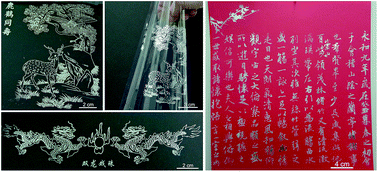Pressured liquid metal screen printing for rapid manufacture of high resolution electronic patterns
Abstract
In this paper, a pressured liquid metal screen printing method for rapidly manufacturing electronically conductive patterns is proposed and experimentally demonstrated. The atomized liquid metal microdroplets are pushed through the mesh openings to wet the target substrate under the airflow force. As the screen is removed away from the substrate, a liquid metal pattern is formed. The width and the thickness of the printed track can reach small values of 233.7 μm and 94.5 μm, respectively, with the surface root mean square roughness of the printed plane at 1.27 μm. With such a printing method, various kinds of complex electronic patterns such as functional circuits, general art drawings etc. can be fabricated in a short time on flexible or rigid substrates with different surface roughnesses. Durability and bending tests are performed to investigate the reliability and mechanical stability of the printed line resistors. In order to illustrate the screen printing of functional electronics, a liquid metal radio frequency identification antenna tag is fabricated with the reflection coefficient measured. Future applications of the liquid metal screen printing technique can be envisaged in flexible printed circuit board manufacturing, paper-based electronics, metal tags, the art of metal calligraphy & painting and so on.


 Please wait while we load your content...
Please wait while we load your content...